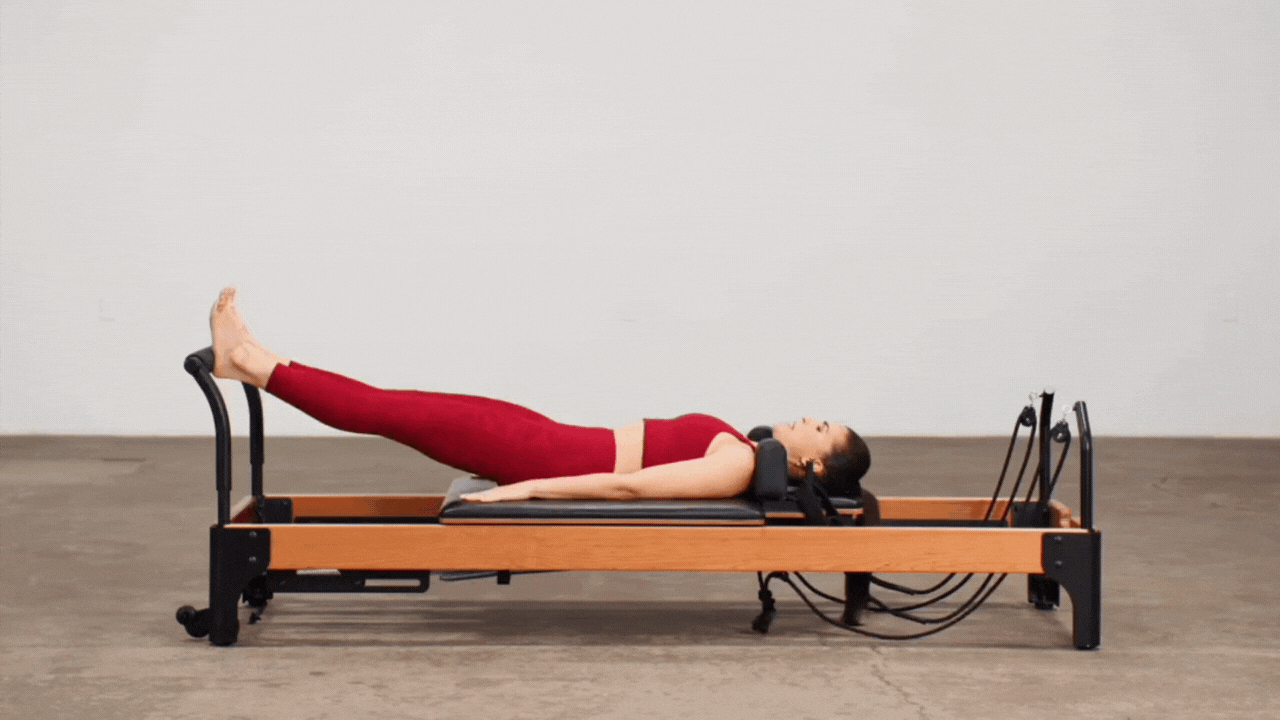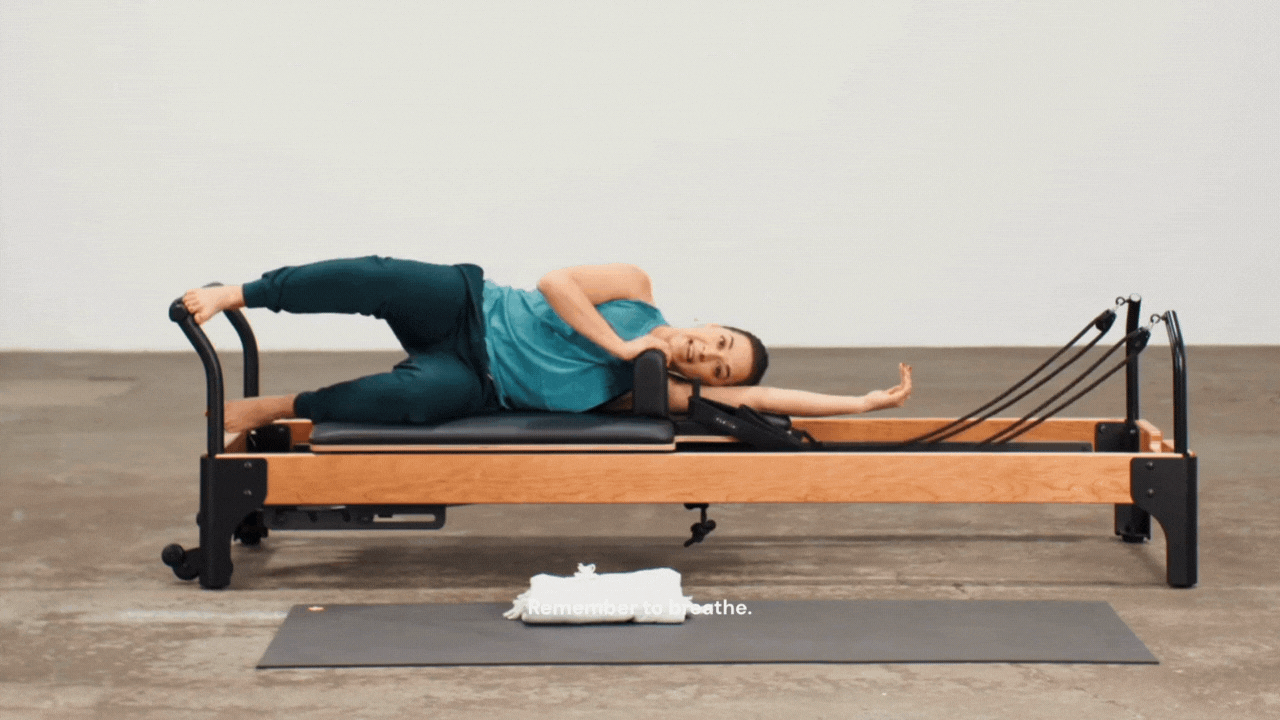Is Pilates good for back pain?
If you’re experiencing back pain, you’re probably looking for form of exercise that can alleviate it or and won’t aggravate it. With that, you might be wondering, “Is Pilates good for back pain?”
Let’s discuss!
Is it okay to do Pilates with lower back pain?
The first thing you should know is that if you’re experiencing back pain you’re not alone. In fact the CDC found that one fourth of adults reported back pain in 3 months.
While every case of back pain is different, and you should always consult your doctor before starting an exercise program particularly if you have pain.
However, Pilates is typically a safe and effective form of exercise for back pain as long as you pick the right exercises for your body and don’t perform any movements that your doctor or physical therapist told you not to.
Which Pilates is best for back pain?
Pilates was created to be a system of exercise that involved matwork and equipment work, including the reformer, cadillac, and chair.
The most common Pilates machine that you will find in a studio is the reformer, so for the purposes of this article, we’ll discuss the benefits and differences of practicing Pilates on the mat versus the reformer if you have back pain.
The best type of Pilates for back pain is the reformer, because it better supports your back during exercise. It also has more options for modifications and additional exercises that cannot be done on the mat.
However, as you get stronger, you can continue to challenge your core strength and control using the mat exercises. It might be surprising to hear, but sometimes the matwork is actually more challenging than the reformer!
Is Pilates better than yoga for back pain?
Yoga and Pilates are both mind body modalities. However, they offer different benefits. This is also the case with back pain.
If you’re looking for a low back friendly form of exercise, then Pilates is probably a better option for you than yoga - especially if you intend to practice it on the reformer. This is because the reformer provides more support and modifications for low back pain than you will get with yoga, which like Pilates matwork involves bodyweight movements and minimal props.
If you are choosing between Pilates mat exercises and yoga, then the type of back that you have will determine which form of movement is better for you. This is because some back issues do better with spinal flexion (round back) based movements, while others do better with spinal extension (backbend) based movements.
Mat Pilates tends to involve more round back exercises, whereas yoga tends to bias more back extension exercises, so you should consider this when choosing a modality. If you’re unsure of what you need, you should ask your doctor.
Finally, the same way that there are different types of Pilates, there are different types of yoga. Some forms of yoga are more focused on meditation or are specifically designed to be therapeutic. If you are looking for relaxation and not exercise, then you may prefer this form of yoga to Pilates for back pain.
However, Pilates on the reformer is probably your best option for back pain friendly exercise.
3 reasons why reformer Pilates is good for back pain
Reason 1: Pilates improves body awareness, which may reduce low back pain
Did you know that we often have less body awareness around the parts of our body that hurt and that for some people, this may increase pain?
It’s true and in this case of back pain, this means that while you may be aware that your back hurts, you may also struggle to sense how your back is positioned during exercise or movements of daily life.
Pilates is good for back pain especially if you do it on the reformer. This is because the equipment provides feedback to your spine while supporting you at the same time!
For example, when you lie on your back on the Reformer carriage, your lower back is completely supported. Also, because your back is touching the carriage while you exercise, you are receiving constant feedback to that area, which will improve your body awareness.
The end result is that you will better be able to sense how your back is moving, which may also decrease low back pain the process. Heck yeah!
Reason 2: Reformer Pilates improves core strength and joint stability
We bet you’ve heard that core strength can reduce or prevent back pain.
We’re gonna be straight with you. The science around pain and injury prevention is more complicated than this, BUT core work on the Pilates Reformer machine may help alleviate back pain, because of how Pilates exercises are designed.
An incredibly cool thing about Pilates on the Reformer is that it teaches you how to use your core to stabilize your back during virtually any activity including walking, running, golf, or tennis!
When you can control how your back is moving during exercise, it may reduce pain.
And Pilates on the Reformer strengthens more than your core. It also targets other key muscle groups, such as your glutes and upper back, which are major players in supporting your joints and can reduce how hard your back has to work.
This type of deep strength also makes all movement feel fluid and effortless, which will help you feel strong, confident, and more energized as you move through life. Who doesn’t want that?
Reason 3: Pilates on the Reformer improves flexibility and mobility
Here’s another wild fact about back pain. Sometimes, even though your back hurts, the problem is often elsewhere. For instance, it could be that your back is fine, but you don’t have enough flexibility in your hamstrings or your hips are overly stiff, so your back takes up the slack.
Exercises on the Pilates Reformer are specifically designed to target and improve mobility in key areas, including your aforementioned hips.
Additionally, many of the Pilates machine exercises have built in stretches for commonly tight muscles, such as your hamstrings, which can help you increase flexibility as you get stronger.
Best Pilates exercises for back pain
Back pain is complex and may occur for a number of reasons. With this in mind, the best exercises for your back pain may be different than someone else with a different diagnosis. However, most exercises that can be done with a neutral spine are considered safe for back pain. Additionally, exercises that strengthen your core and glutes are known to help back pain.
Here are 3 examples of Pilates exercises that are known to be beneficial for many forms of back pain. They target your glutes and core while being accessible to Pilates beginners.
Pilates exercise for back pain #1:Footwork

Pilates exercise for back pain #2: Frog

Pilates exercise for back pain #3: Side Lying Footwork

What to do if you’re ready to try Pilates for back pain
Back pain is complex, but feeling better doesn’t have to be. Pilates may be the perfect form of exercise for you if you’re working to regain strength after injury or feel better during a flare up, and Flexia has your back (literally). Our Online Studio has collections specifically designed for back care, you can learn more about Flexia’s Online Studio here.
If you’re ready to learn more about how Pilates on the reformer can help with back pain, then check out the Flexia reformer or jump to our demo page to learn if it’s the right fit for you!
Have more questions about our reformer? Check out our Knowledge Base to find answers to common questions, like “How much room do I need for a Flexia Reformer?” and “Does Flexia offer payment plans or financing?” (yes!). We can’t wait to practice with you.